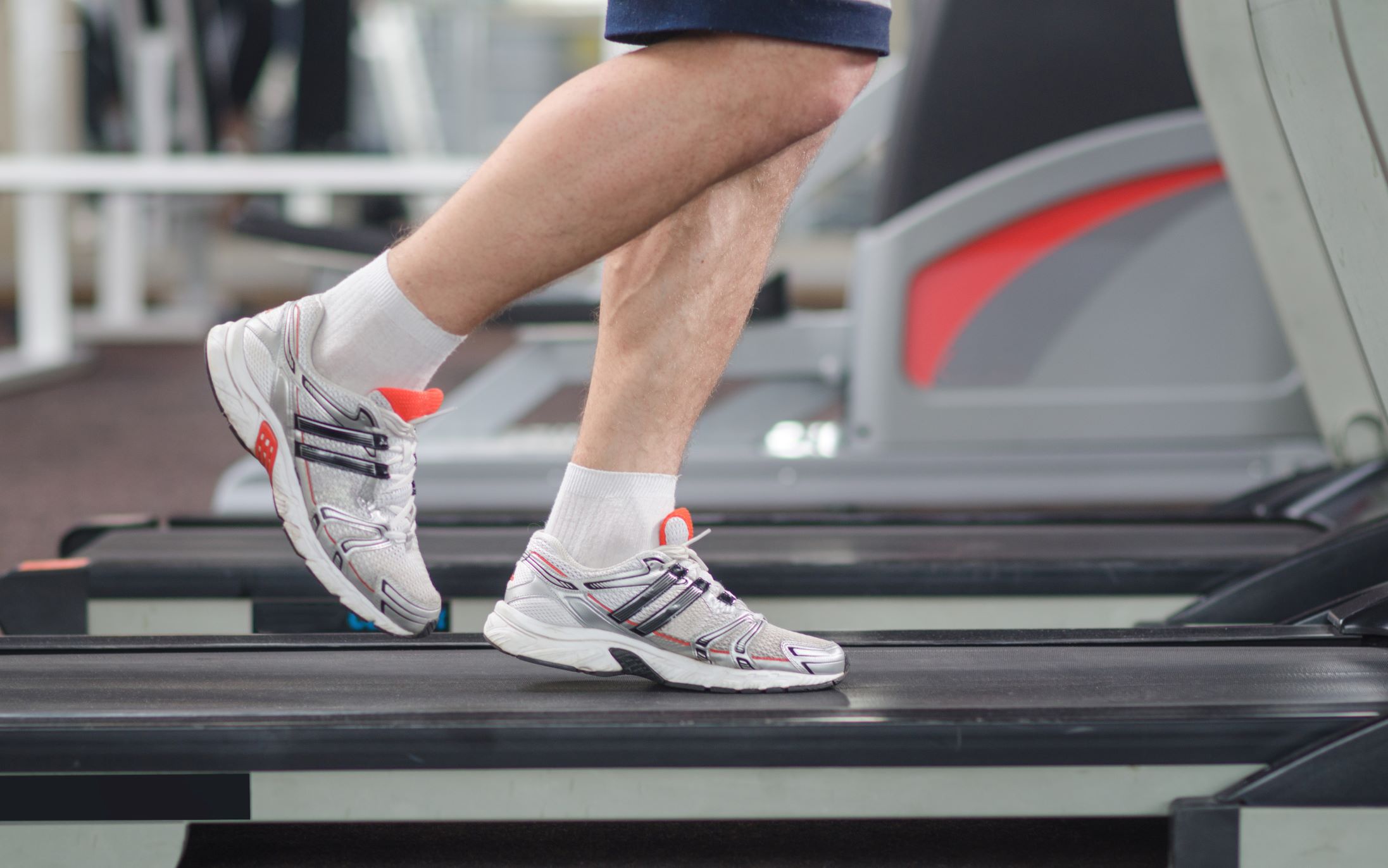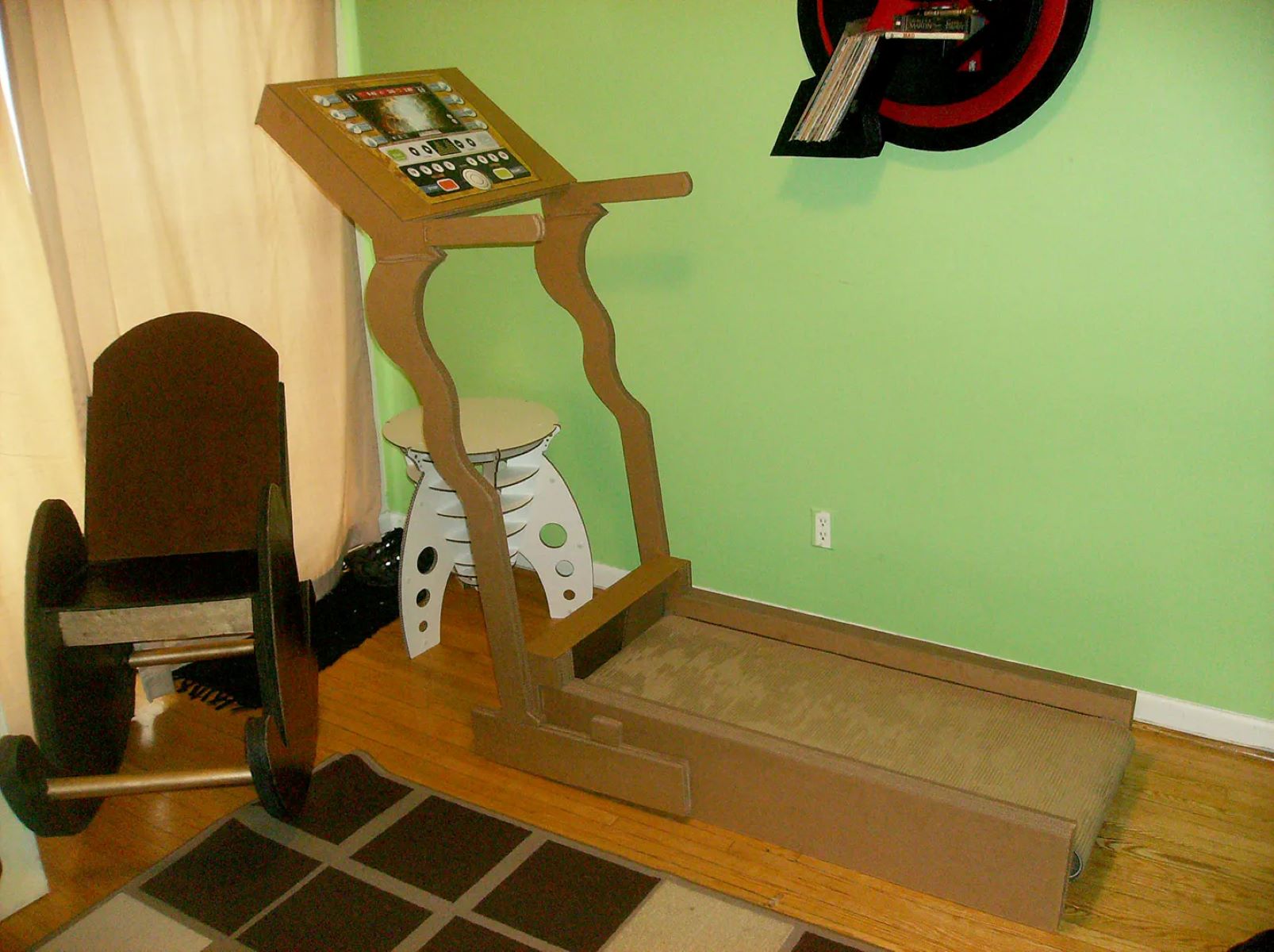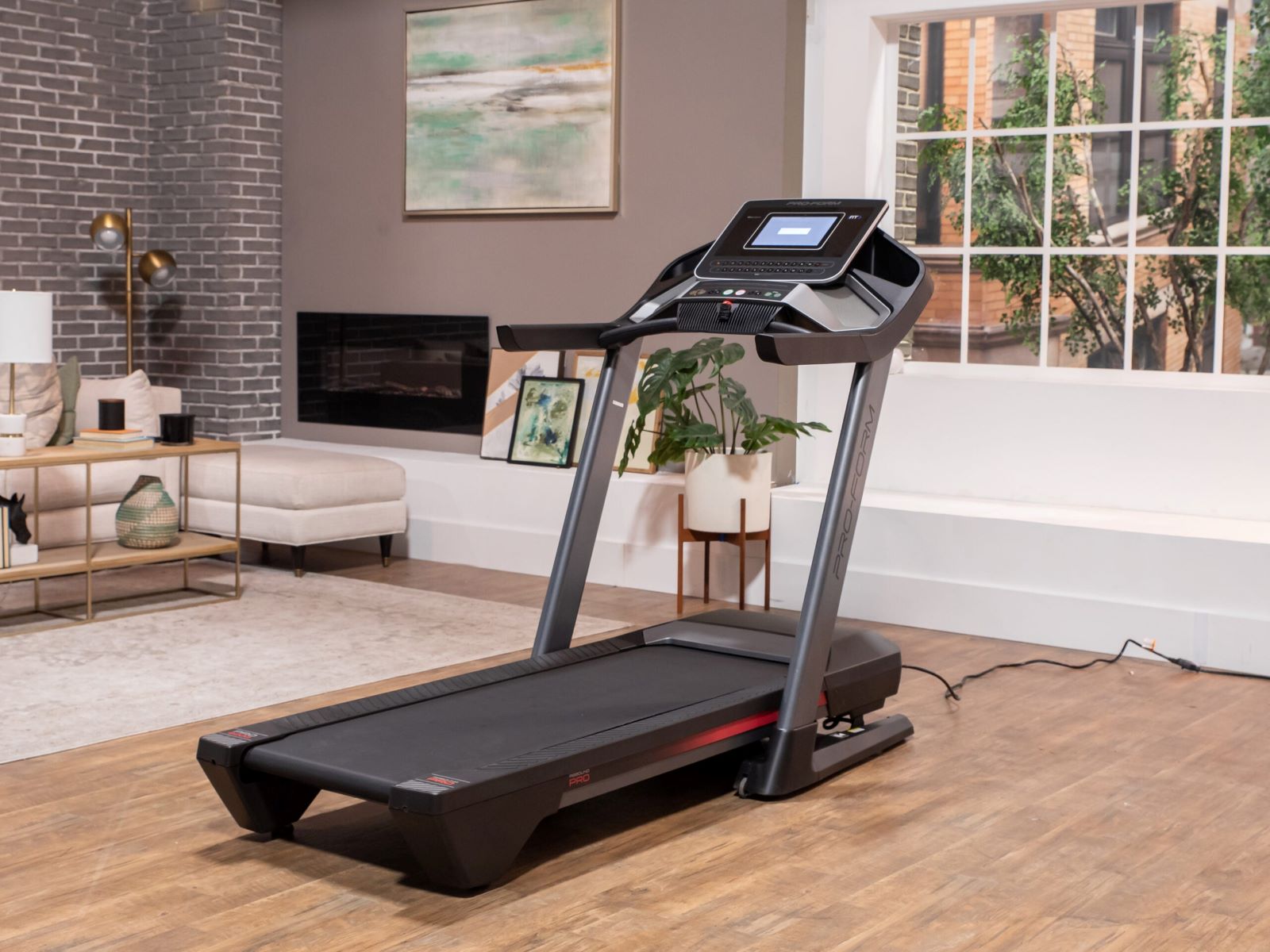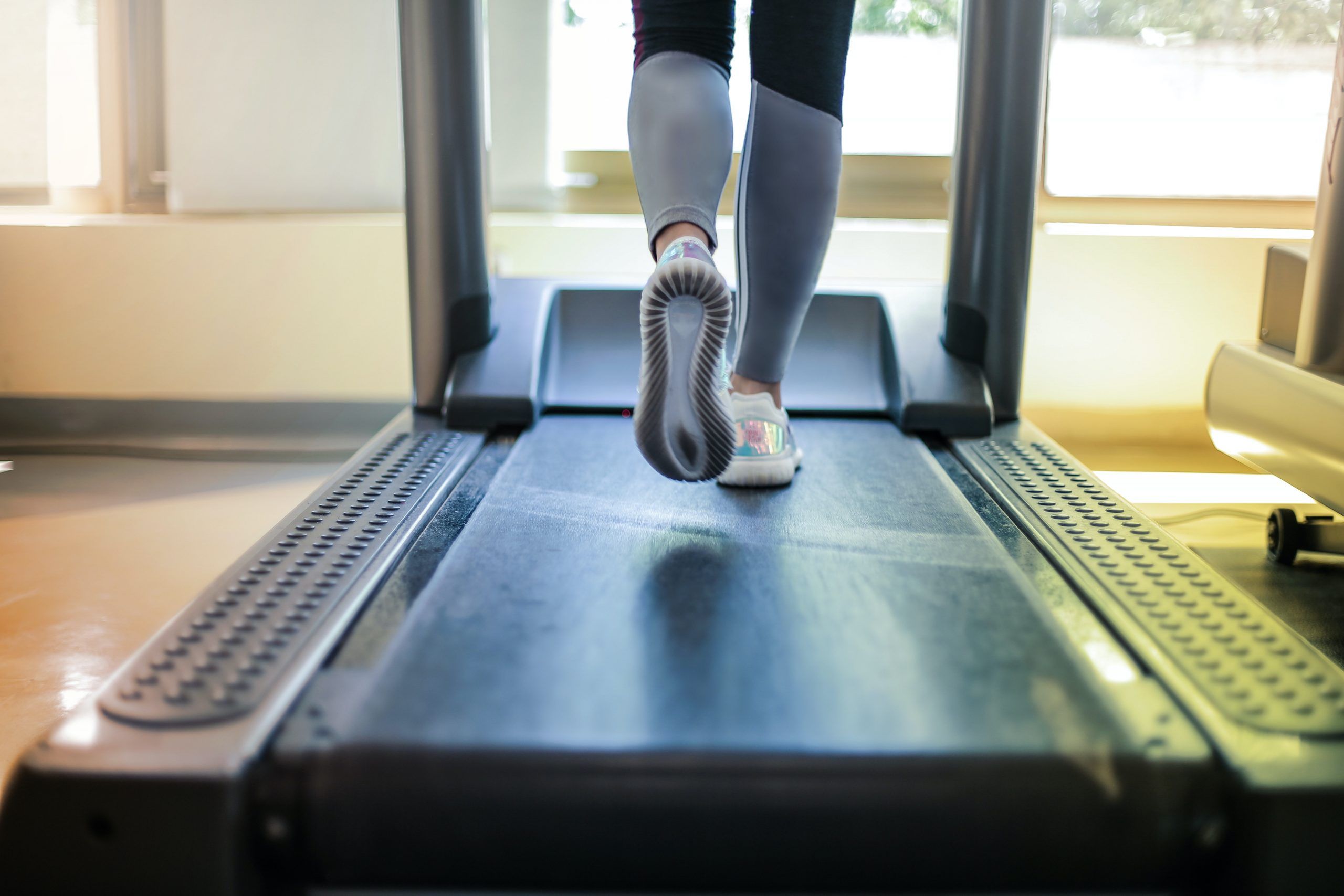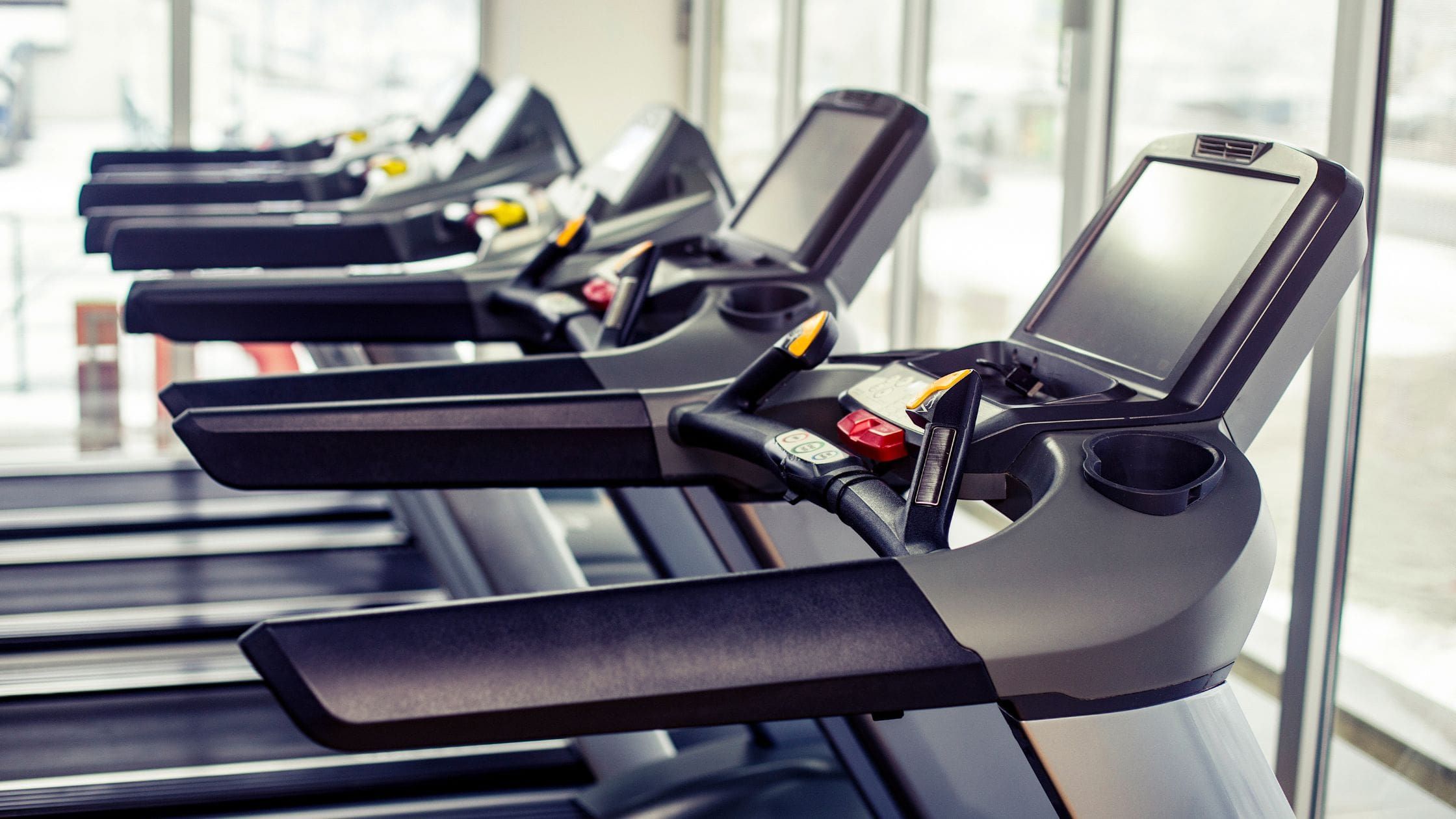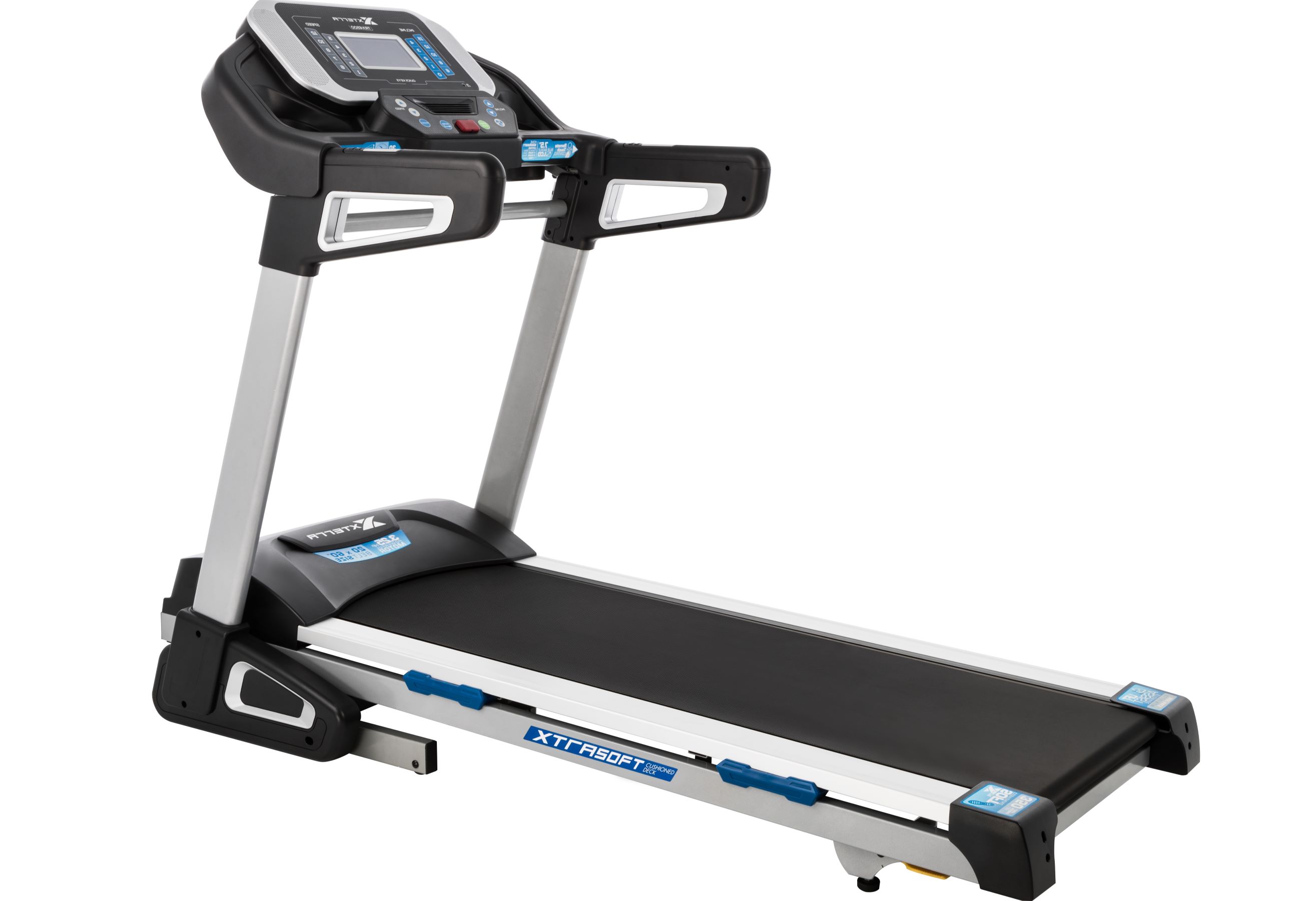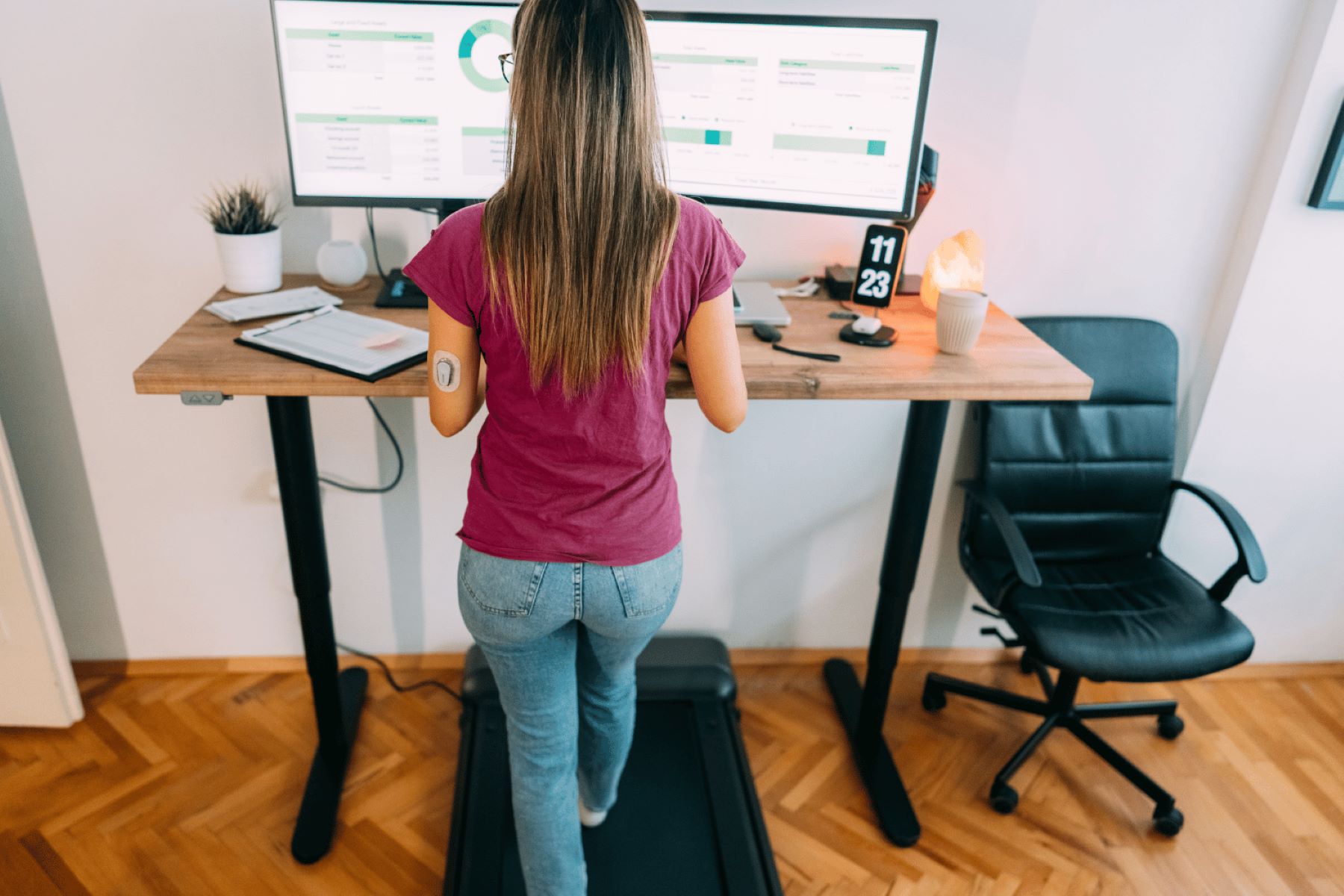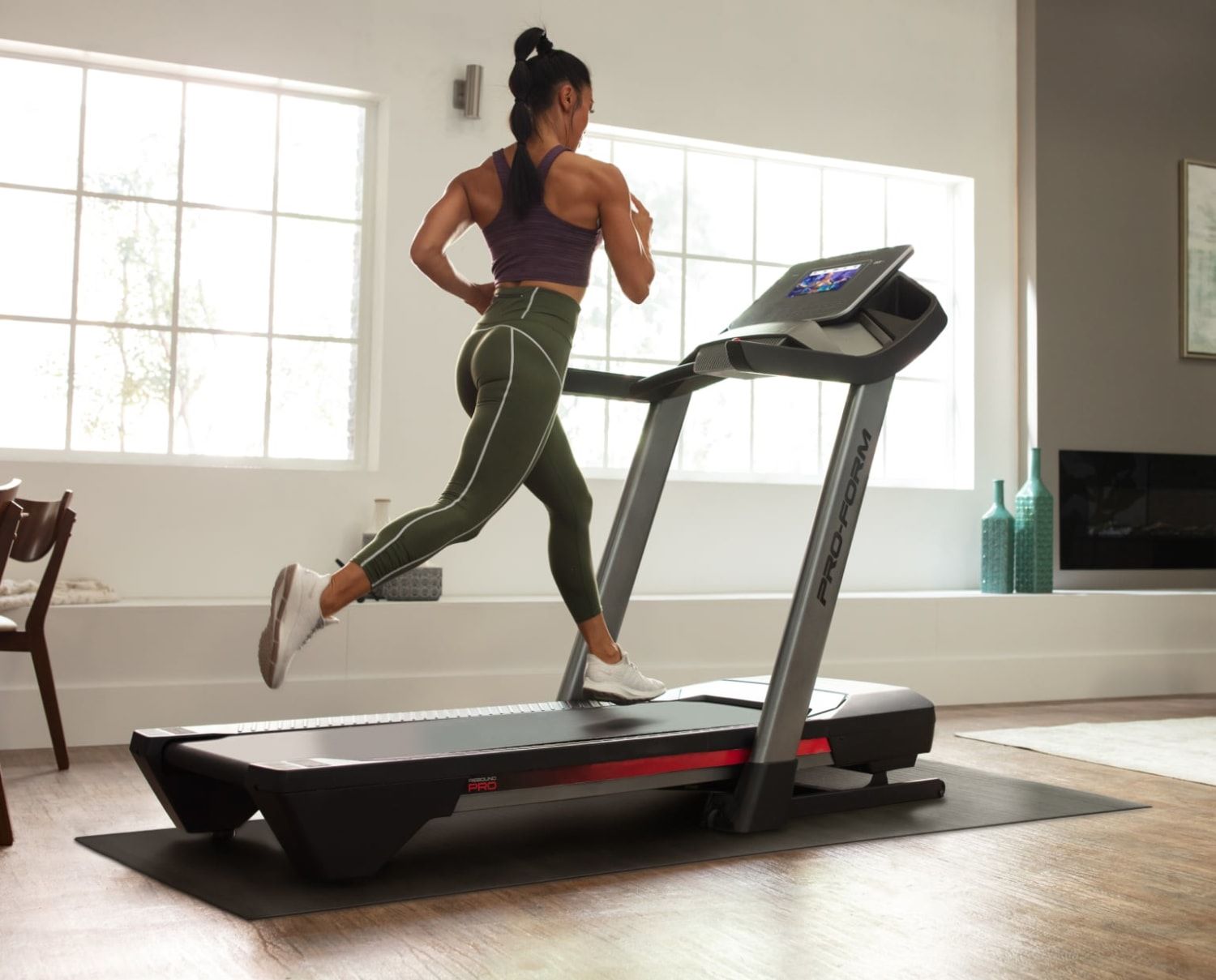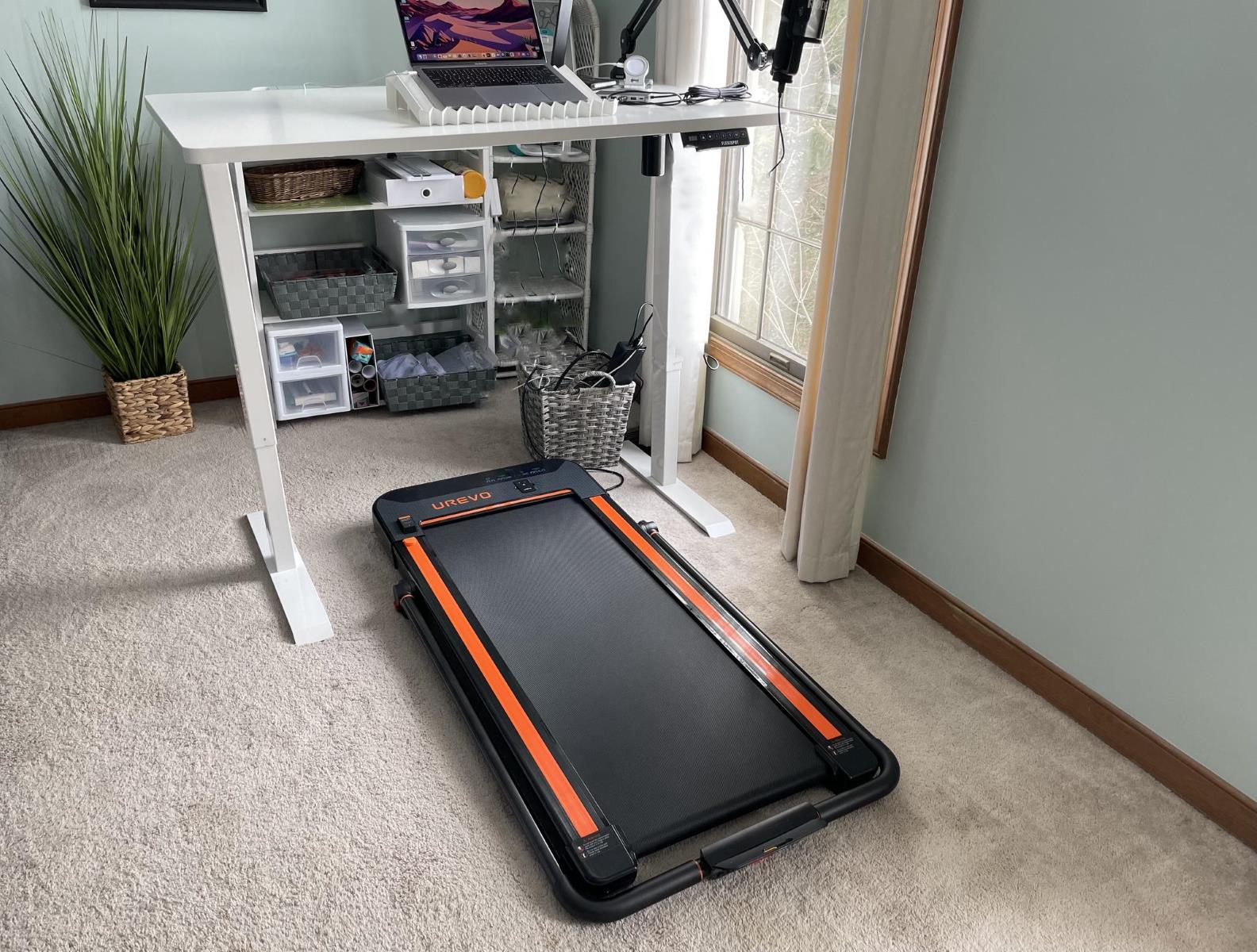Home>Misc>Featured>Why Does The Treadmill Make Noise When Running?


Featured
Why Does The Treadmill Make Noise When Running?
Modified: October 25, 2023
Looking for a featured treadmill? Don't let the noise while running be a problem. Discover our selection of quiet treadmills to enjoy your workout without any distractions.
Introduction
Using a treadmill is a convenient and effective way to stay fit and active, but there’s nothing more frustrating than a noisy treadmill disrupting your workout. The constant clanking or whirring can be distracting and make it difficult to focus on your exercise routine. Fortunately, there are common causes for treadmill noise that can be addressed, as well as soundproofing solutions to minimize or eliminate the unwanted racket.
Understanding the potential reasons behind the noise can help you troubleshoot the issue and find the appropriate solution. In this article, we’ll explore some of the common culprits that lead to treadmill noise and provide tips on how to address and prevent them.
Whether you’re experiencing a loud grinding sound, a squeaky belt, or a rattling noise, it’s important to identify the source of the problem. Treadmill noise can stem from various components, including the belt, motor, alignment, lubrication, or electronic malfunctions. By examining each possible cause, you can determine the most likely source and take the necessary steps to rectify the issue.
It’s crucial to keep in mind that regular maintenance and proper care of your treadmill can go a long way in preventing excessive noise. Performing routine checks and addressing any issues promptly can help prolong the lifespan of your machine and ensure a smooth and quiet workout experience.
In the following sections, we’ll delve into some of the common causes of treadmill noise and explore practical solutions to help you enjoy a peaceful and uninterrupted workout session.
Common Causes of Treadmill Noise
While a treadmill is designed to operate quietly, there are several reasons why it might produce excessive noise during use. Here are some of the common causes:
- Belt Issues: The treadmill belt is a crucial component that can wear out over time. If the belt becomes frayed or worn, it can create a noisy and uneven running surface. Tension issues, such as an overly tight or loose belt, can also result in excessive noise.
- Motor Problems: A malfunctioning motor is another common culprit behind treadmill noise. If the motor is worn out or has damaged bearings, it may produce grinding or whirring sounds. Additionally, misaligned pulleys or a loose motor mount can contribute to the noise.
- Misalignment or Loose Parts: Loose or misaligned components can cause vibrations and rattling noises during treadmill operation. Check for loose screws, nuts, or bolts, and ensure that all parts are tightly secured. Misalignment of the rollers or deck can also contribute to the noise.
- Lubrication Problems: A lack of proper lubrication can result in increased friction between the belt and deck, leading to a noisy treadmill. Over time, the lubricant can dry out or become unevenly distributed, causing squeaking or scraping noises. Regular lubrication maintenance is necessary to prevent such issues.
- Electronic Malfunctions: Electrical problems, such as faulty wiring or malfunctioning circuit boards, can contribute to unusual sounds during treadmill operation. If the noise coincides with unusual behavior of the control panel or display, it’s important to inspect the electrical components for any issues.
Identifying the specific cause of the noise is essential for determining the appropriate solution. In the next sections, we’ll discuss various soundproofing solutions that can help reduce or eliminate treadmill noise and provide you with a more enjoyable workout experience.
Belt Issues
The belt is a critical component of your treadmill, and any issues with it can lead to excessive noise during operation. Here are some common belt-related issues that can cause noise:
- Wear and Tear: Over time, the treadmill belt can become frayed, worn, or stretched, resulting in a noisy workout. Inspect the belt regularly for signs of damage and replace it if necessary.
- Tension: An improperly tensioned belt can create noise during use. If the belt is too loose, it may slip and produce a slapping or squeaking sound. On the other hand, an overly tight belt can cause excessive friction and generate grinding noises. Consult your treadmill’s user manual for instructions on how to properly adjust the belt tension.
- Alignment: A misaligned belt can cause the treadmill to run off-center, leading to noise and potential safety hazards. To check the alignment, use a tape measure to ensure the distance between the edge of the belt and the side rail is consistent on both sides. If the belt is misaligned, consult your treadmill’s manual for instructions on how to adjust it.
To address belt issues and reduce noise, follow these steps:
- Inspect the belt for any signs of wear, damage, or stretching. If necessary, replace the belt with a new one.
- Adjust the tension of the belt according to the manufacturer’s instructions. Avoid over-tightening or loosening the belt excessively.
- Check the alignment of the belt and make any necessary adjustments to ensure it runs straight and centered.
- Regularly clean the belt and deck to remove any debris or dirt that can contribute to noise during operation.
- Apply a suitable treadmill lubricant according to the manufacturer’s recommendations to minimize friction and ensure smooth running.
By addressing belt issues and properly maintaining it, you can significantly reduce treadmill noise and enjoy a quieter workout experience.
Motor Problems
The motor is a vital component of your treadmill, and if it is not functioning properly, it can contribute to excessive noise during operation. Here are some motor-related issues that may result in noise:
- Worn Out Motor: Over time, the motor can wear out, resulting in grinding or whirring noises. If you notice a significant increase in noise coming from the motor, it may be a sign that it needs to be replaced.
- Motor Bearings: The motor bearings can become worn or damaged, leading to noise during treadmill operation. If you hear a squeaking or grinding sound coming from the motor area, it’s likely that the bearings need to be replaced.
- Misaligned Pulleys: If the motor’s pulleys are misaligned, it can cause vibrations and noise. Inspect the pulley alignment and make any necessary adjustments to ensure they are properly aligned.
- Loose Motor Mount: A loose motor mount can result in excessive vibrations and noise. Check the motor mount and tighten any loose connections or bolts.
To address motor-related problems and minimize noise, follow these steps:
- Inspect the motor for any visible signs of wear or damage. If the motor is significantly worn or damaged, it may need to be replaced.
- If you suspect worn motor bearings, consult the treadmill’s user manual for instructions on how to replace them. Alternatively, you can seek professional assistance.
- Check the alignment of the motor pulleys. Adjust them, if necessary, to ensure they are properly aligned.
- Tighten any loose motor mounts or connections to eliminate excessive vibrations and noise.
Regular maintenance and care of the motor, such as keeping it clean and free of debris, can also help prevent motor-related issues and reduce noise. By addressing motor problems promptly, you can enjoy a quieter and more enjoyable treadmill workout experience.
Misalignment or Loose Parts
Loose or misaligned parts can contribute to vibrations and rattling noises during treadmill operation. Here are some common causes of misalignment or loose parts:
- Screws, Nuts, and Bolts: Over time, the vibrations from regular use can cause screws, nuts, and bolts to become loose. Check all the components of your treadmill and tighten any loose connections.
- Rollers: Misaligned rollers can cause the belt to veer off-center, resulting in noise and potential performance issues. Inspect the rollers and make sure they are properly aligned. Consult your treadmill’s user manual for instructions on how to adjust the rollers if needed.
- Deck: A misaligned or loose deck can also contribute to noise during treadmill operation. Check the deck and tighten any loose connections. If the deck is misaligned, consult the user manual for instructions on how to adjust it properly.
To address misalignment or loose parts and minimize noise, follow these steps:
- Inspect all the components of your treadmill, including screws, nuts, bolts, roller, and deck, for any signs of looseness.
- Tighten any loose connections using the appropriate tools.
- Check the alignment of the rollers. Adjust them, if necessary, according to the manufacturer’s instructions.
- Inspect the deck for any misalignment. Follow the user manual guidelines to align the deck properly.
Regularly performing checks for loose or misaligned parts and addressing them promptly can help reduce vibrations and eliminate unnecessary noise during treadmill use. By ensuring that all components are properly secured, you can enjoy a smoother and quieter workout experience.
Lubrication Problems
Proper lubrication is essential for the smooth operation of your treadmill. Without appropriate lubrication, friction between the belt and deck can increase, resulting in squeaking or scraping noises. Here are some common lubrication problems that can lead to noise:
- Dry Lubrication: Over time, the lubricant on the treadmill belt and deck can dry out, causing increased friction and noise. Regularly check the lubrication levels and reapply lubricant as recommended by the manufacturer.
- Uneven Lubrication: Improper distribution of lubricant across the belt and deck can lead to uneven movement and noise. Ensure that the lubricant is evenly spread on the belt’s surface.
- Using the Wrong Lubricant: It is important to use the specific lubricant recommended by the treadmill manufacturer. Using the wrong type of lubricant may not provide the necessary lubrication or can damage the components.
To address lubrication problems and minimize noise, follow these steps:
- Clean the belt and deck to remove any debris or dirt that may have accumulated.
- Check the lubrication levels and follow the manufacturer’s recommendations for the appropriate lubricant to use.
- Apply the lubricant evenly along the surface of the treadmill belt.
- Follow any additional instructions provided by the manufacturer regarding the frequency of lubrication and maintenance.
Regularly maintaining proper lubrication of your treadmill belt and deck can help reduce friction and noise, ensuring a smooth and quiet workout experience. Consult your treadmill’s user manual for specific guidelines on lubrication and maintenance.
Electronic Malfunctions
Electronic malfunctions can also contribute to unusual noises during treadmill operation. Here are some common electronic issues that may result in noise:
- Faulty Wiring: Poorly connected or damaged wiring can cause irregular electrical signals, leading to unusual sounds during treadmill use.
- Malfunctioning Circuit Boards: Issues with the circuit boards, such as loose connections or damaged components, can result in abnormal noises or erratic behavior of the treadmill.
- Control Panel or Display: If the noise coincides with unusual behavior of the control panel or display, it may indicate an issue with the electronic components.
If you suspect electronic malfunctions as the cause of the noise, consider taking the following steps:
- Inspect the wiring connections to ensure they are securely connected. If you notice any loose or damaged wiring, consult a professional or the manufacturer for assistance.
- If you are comfortable working with electronics, you can inspect the circuit boards for any signs of damage or loose components. However, if you are unsure, it is best to seek professional help.
- Consult your treadmill’s user manual or contact the manufacturer’s customer support for guidance on troubleshooting electronic issues.
Electronic malfunctions can be more complex to diagnose and resolve compared to other causes of treadmill noise. It is important to exercise caution and, when in doubt, seek professional assistance to ensure the safety and proper functioning of your treadmill.
Soundproofing Solutions for Treadmills
If you’ve tried addressing the specific causes of treadmill noise but are still experiencing excessive sound, there are additional soundproofing solutions you can consider. Here are some effective ways to minimize or eliminate treadmill noise:
- Insulating Mat: Placing an insulating mat underneath your treadmill can help absorb vibrations and reduce noise transmission to the floor. Look for a mat specifically designed for treadmills, as it will provide optimal cushioning and noise reduction.
- Anti-Vibration Pads: Anti-vibration pads are another solution to reduce the noise caused by treadmill vibrations. These pads help absorb the vibrations and prevent them from traveling through the floor. Place the pads under the treadmill’s feet for maximum effectiveness.
- Noise-Canceling Headphones: If external noise reduction is not enough, consider using noise-canceling headphones while using the treadmill. These headphones actively reduce ambient noise, allowing you to enjoy your workout without the distraction of treadmill noise.
- Soundproof Enclosure: For those who want maximum noise reduction, building a soundproof enclosure for your treadmill can be a more involved but highly effective solution. Construct an enclosure using soundproofing materials such as mass-loaded vinyl, acoustic foam, and weatherstripping to create a dedicated space for your treadmill without the noise spreading to the surrounding area.
It’s important to note that while these soundproofing solutions can significantly reduce treadmill noise, they may not completely eliminate it. The effectiveness may vary depending on factors such as the intensity of noise, the quality of your equipment, and the environment in which your treadmill is located.
Consider combining multiple soundproofing methods for optimal results. For example, using an insulating mat or anti-vibration pads in combination with noise-canceling headphones can provide an even quieter workout experience.
Remember to regularly inspect and maintain your treadmill to prevent excessive noise from occurring. Routine lubrication, belt tension checks, and tightening loose parts can go a long way in reducing noise and ensuring smooth operation.
By implementing these soundproofing solutions and practicing proper treadmill maintenance, you can enjoy a more peaceful and enjoyable workout experience without the disturbance of excessive noise.
Insulating Mat
One effective soundproofing solution for reducing treadmill noise is to place an insulating mat underneath the machine. An insulating mat is specifically designed to absorb vibrations and minimize noise transmission to the floor and surrounding areas. Here are some key points to consider when using an insulating mat:
- Selecting the Right Mat: When purchasing an insulating mat for your treadmill, look for one that is specifically designed for this purpose. These mats are often made from high-density foam or rubber, which provide optimal cushioning and noise reduction.
- Installation: Ensure that the mat is large enough to fully cover the footprint of your treadmill. Place the mat on a clean and level surface, and then position your treadmill on top of it. Make sure that the treadmill’s feet are securely placed on the mat for maximum effectiveness.
- Vibration Absorption: The primary function of the insulating mat is to absorb vibrations generated by the treadmill. This helps prevent the vibrations from traveling through the floor and creating noise in the surrounding areas. The thick and dense material of the mat absorbs and dampens the vibrations, resulting in a quieter workout experience.
- Impact Reduction: In addition to reducing vibrations, the insulating mat also provides impact reduction. It helps cushion the treadmill’s movements, minimizing the sound of your footsteps and reducing the overall impact noise produced by the machine.
- Easy Maintenance: Insulating mats are generally easy to clean and maintain. They can be wiped down with a damp cloth or gentle cleanser as needed. Regular maintenance will help prolong the lifespan of the mat and maintain its soundproofing properties.
Using an insulating mat underneath your treadmill is a simple and cost-effective way to reduce noise. It effectively absorbs vibrations and minimizes noise transmission, allowing you to enjoy a quieter workout environment. When combined with other soundproofing solutions or regular maintenance, an insulating mat can further enhance the noise reduction of your treadmill and provide a more peaceful workout experience.
Anti-Vibration Pads
Anti-vibration pads are another effective soundproofing solution to consider for reducing treadmill noise. These pads are designed to absorb and dampen the vibrations produced by the treadmill, preventing them from transferring to the floor and causing noise. Here’s what you need to know about using anti-vibration pads:
- Materials and Design: Anti-vibration pads are typically made from rubber or other high-density materials that have excellent vibration absorbing properties. They are designed to be placed under each foot or contact point of the treadmill, effectively isolating the machine from the floor.
- Installation: To use anti-vibration pads, simply place one pad under each foot or contact point of the treadmill. Make sure the pads are properly aligned and evenly distributed to ensure balanced support.
- Vibration Absorption: The purpose of anti-vibration pads is to absorb and dissipate the vibrations produced by the treadmill. The pads act as a buffer, reducing the transfer of vibrations to the floor and minimizing noise generation. This not only helps create a quieter workout environment but also prevents the vibrations from affecting other parts of your home or building.
- Effectiveness: The effectiveness of anti-vibration pads can vary depending on factors such as the quality of the pads and the specific treadmill model. It is recommended to choose high-quality pads that are suitable for the weight and size of your treadmill to ensure optimal noise reduction.
- Maintenance: Anti-vibration pads are generally low maintenance. However, it’s important to periodically check the pads for wear and tear and replace them if needed. Regular cleaning of the pads can also help maintain their efficiency in reducing vibrations and noise.
By using anti-vibration pads, you can significantly minimize the vibrations and noise generated by your treadmill. The pads isolate the machine from the floor, preventing the vibrations from being transmitted and creating a quieter workout experience. When combined with other soundproofing techniques and regular treadmill maintenance, anti-vibration pads can help you enjoy a more peaceful and enjoyable workout without disturbing others in your home or building.
Noise-Canceling Headphones
Noise-canceling headphones are a popular solution for minimizing treadmill noise during your workout. These headphones use advanced technology to actively cancel out external sounds, allowing you to enjoy your favorite music or podcasts without the distraction of treadmill noise. Here’s what you need to know about using noise-canceling headphones:
- Active Noise Cancellation: Noise-canceling headphones employ active noise cancellation technology to reduce or eliminate external sounds. They use built-in microphones to detect ambient noise, and then generate sound waves that cancel out those frequencies, effectively reducing the noise that reaches your ears.
- Enhanced Sound Experience: In addition to noise reduction, noise-canceling headphones also provide a more immersive and enjoyable audio experience. By eliminating background noise, you can fully immerse yourself in your chosen audio content, making your workout more enjoyable and engaging.
- Compatibility: Noise-canceling headphones can be used with any device that has a headphone jack or supports Bluetooth connectivity. This allows you to connect them to your treadmill’s console, smartphone, or other audio devices, giving you a wide range of options for audio playback.
- Battery Life and Charging: Noise-canceling headphones are typically powered by a rechargeable battery. The battery life varies depending on the model and usage, so it’s important to check the specifications and ensure that the battery can last for the duration of your workout. Most headphones come with a charging cable or dock for easy recharging.
- Comfort and Fit: It’s important to choose noise-canceling headphones that are comfortable to wear during your workout. Look for headphones with adjustable headbands and cushioned ear cups to ensure a secure and comfortable fit. This will allow you to focus on your exercise without distractions.
Noise-canceling headphones provide an effective way to block out treadmill noise and create a more enjoyable workout environment. By immersing yourself in your favorite audio content while canceling out background noise, you can focus on your workout and achieve a more immersive and engaging experience. Whether you prefer music, podcasts, or audiobooks, noise-canceling headphones can enhance your treadmill workout and make it more enjoyable.
Soundproof Enclosure
A soundproof enclosure is a more involved but highly effective solution for reducing treadmill noise. By building an enclosure around your treadmill, you can create a dedicated space that contains and suppresses the noise generated by the machine. Here’s what you need to know about constructing a soundproof enclosure:
- Soundproofing Materials: To create an effective soundproof enclosure, you will need to use specialized soundproofing materials. Common options include mass-loaded vinyl, acoustic foam panels, and weatherstripping. These materials help absorb and block sound waves, preventing them from escaping the enclosure.
- Enclosure Design: The design of the enclosure should take into account the size of the treadmill and provide sufficient space for comfortable use. It’s important to consider ventilation to prevent overheating of the treadmill and ensure proper air circulation inside the enclosure.
- Sealing: Proper sealing is crucial to prevent sound leakage. Use weatherstripping or acoustic caulking to seal any gaps or openings in the enclosure, including doors or access points.
- Interior Layout: Arrange the inside of the enclosure to ensure easy access to essential treadmill controls and the display panel. Consider incorporating additional features such as shelving for storing water bottles, towels, or other workout accessories.
- Personalization: You can personalize and decorate the soundproof enclosure to your liking. Consider adding motivational posters or artwork to create an inspiring workout environment.
Building a soundproof enclosure requires some construction skills and knowledge of soundproofing techniques. If you’re not familiar or comfortable with building your enclosure, consider hiring a professional to ensure optimal noise reduction and safety.
A soundproof enclosure provides a dedicated space for your treadmill where noise is contained, allowing you to enjoy a quieter workout experience. It not only minimizes noise disruptions for yourself but also reduces the disturbance to others in your home or building. The enclosure creates a private and peaceful environment where you can focus on your exercise and achieve your fitness goals without the distraction of treadmill noise.
Conclusion
Treadmill noise can be a frustrating distraction during your workout, but there are several common causes and effective soundproofing solutions to address the issue. By identifying the specific source of the noise, such as belt issues, motor problems, misalignment, lubrication problems, or electronic malfunctions, you can take the necessary steps to resolve it and enjoy a quieter workout experience.
In addition to addressing the specific causes of treadmill noise, soundproofing solutions can further minimize or eliminate the unwanted racket. Using an insulating mat or anti-vibration pads underneath the treadmill can absorb vibrations and reduce noise transmission to the floor. Noise-canceling headphones provide a personal audio experience while canceling out background noise. For those seeking maximum noise reduction, building a soundproof enclosure for the treadmill creates a dedicated space that contains and suppresses the noise.
Regular maintenance and proper care of your treadmill are also essential in preventing excessive noise. Performing routine checks, lubricating the belt and deck, and tightening loose parts can help prolong the lifespan of your treadmill and ensure a smooth and quiet workout session.
Remember, a quieter workout environment not only enhances your focus and enjoyment but also respects the peace and comfort of others in your home or building. By implementing the appropriate soundproofing solutions and maintaining your treadmill, you can create a peaceful and enjoyable exercise space where noise is minimized, allowing you to fully concentrate on achieving your fitness goals.
